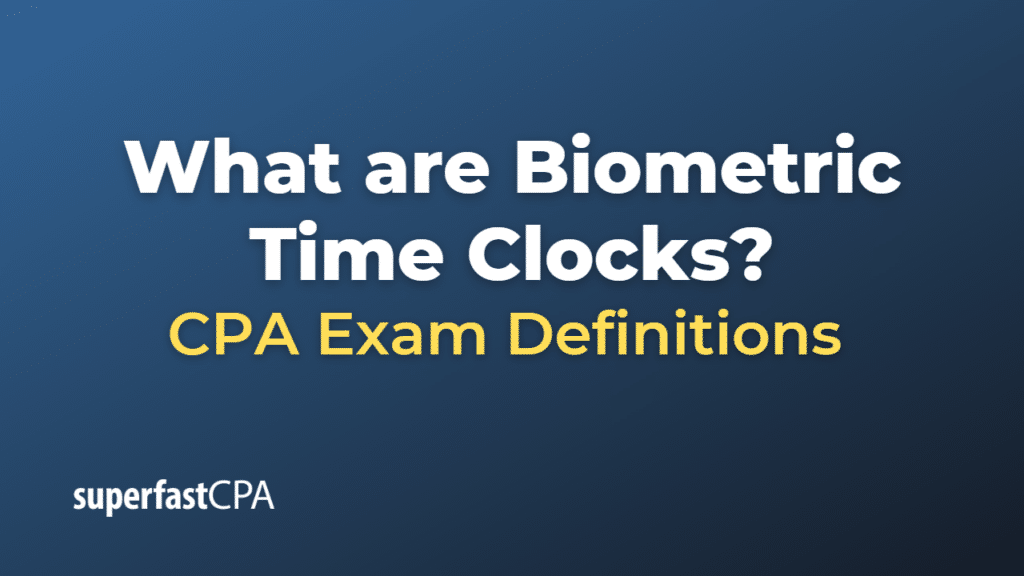Biometric Time Clocks
Biometric time clocks are advanced time-tracking devices that use unique biological characteristics, such as fingerprints, facial recognition, or iris scans, to record employee attendance and working hours. These systems provide a more accurate, secure, and efficient method of tracking employee time and attendance compared to traditional methods like manual timesheets or punch cards.
Biometric time clocks offer several advantages for employers:
- Accuracy: By using unique biological identifiers, biometric time clocks eliminate the possibility of time theft or “buddy punching,” where employees clock in or out for each other. This ensures accurate tracking of hours worked, overtime, and paid time off.
- Security: Biometric data is unique to each individual, making it difficult to forge or duplicate. This enhances the security of the time-tracking system and reduces the risk of unauthorized access or tampering.
- Efficiency: Biometric time clocks streamline the process of clocking in and out, saving time and effort for both employees and managers. They also simplify the process of generating payroll reports and calculating employee hours, reducing the likelihood of errors and discrepancies.
- Compliance: Accurate time and attendance tracking can help employers comply with labor laws, such as minimum wage and overtime regulations, by ensuring employees are accurately compensated for their hours worked.
- Employee accountability: Biometric time clocks create a clear record of each employee’s attendance, making it easier to identify patterns of tardiness or absenteeism and address performance issues.
Despite these advantages, there are also some concerns and challenges associated with biometric time clocks:
- Privacy: The collection and storage of biometric data can raise privacy concerns among employees. Employers must ensure they comply with applicable privacy laws and regulations and implement strong data security measures to protect employees’ sensitive information.
- Cost: Biometric time clocks can be more expensive than traditional time-tracking methods, particularly for small businesses. However, the increased accuracy and efficiency may offset these costs in the long run.
- Maintenance and technical issues: As with any technology, biometric time clocks can experience technical issues or require regular maintenance. Employers must be prepared to address these challenges to minimize disruptions to their time and attendance tracking.
Example of Biometric Time Clocks
Let’s consider a hypothetical example of a small manufacturing company, “PrecisionParts,” that decides to implement a biometric time clock system to improve its time and attendance tracking.
PrecisionParts employs 50 workers, who work in two shifts. Previously, the company used a manual timesheet system where employees recorded their hours worked on a paper form. This system was prone to errors, time theft, and buddy punching, leading to inefficiencies and increased labor costs.
To address these issues, PrecisionParts decides to install a fingerprint-based biometric time clock system. The system requires employees to scan their fingerprint when they arrive at work, take breaks, and leave for the day. The biometric time clock records the employees’ working hours accurately and securely, eliminating the issues associated with the manual timesheet system.
After implementing the biometric time clock system, PrecisionParts experiences several benefits:
- Accuracy: The new system eliminates time theft and buddy punching, ensuring that employees are accurately compensated for the hours they work.
- Efficiency: The biometric time clock streamlines the process of clocking in and out, saving time for employees and managers. It also simplifies the generation of payroll reports and calculations, reducing errors and discrepancies.
- Compliance: With accurate time and attendance records, PrecisionParts can ensure compliance with labor laws, such as minimum wage and overtime regulations.
- Employee accountability: The biometric time clock provides a clear record of each employee’s attendance, making it easier for managers to identify patterns of tardiness or absenteeism and address performance issues.
Despite the initial investment in the biometric time clock system, PrecisionParts finds that the increased accuracy, efficiency, and compliance benefits outweigh the costs in the long run. The company also addresses employees’ privacy concerns by implementing strong data security measures and ensuring compliance with applicable privacy laws and regulations.













